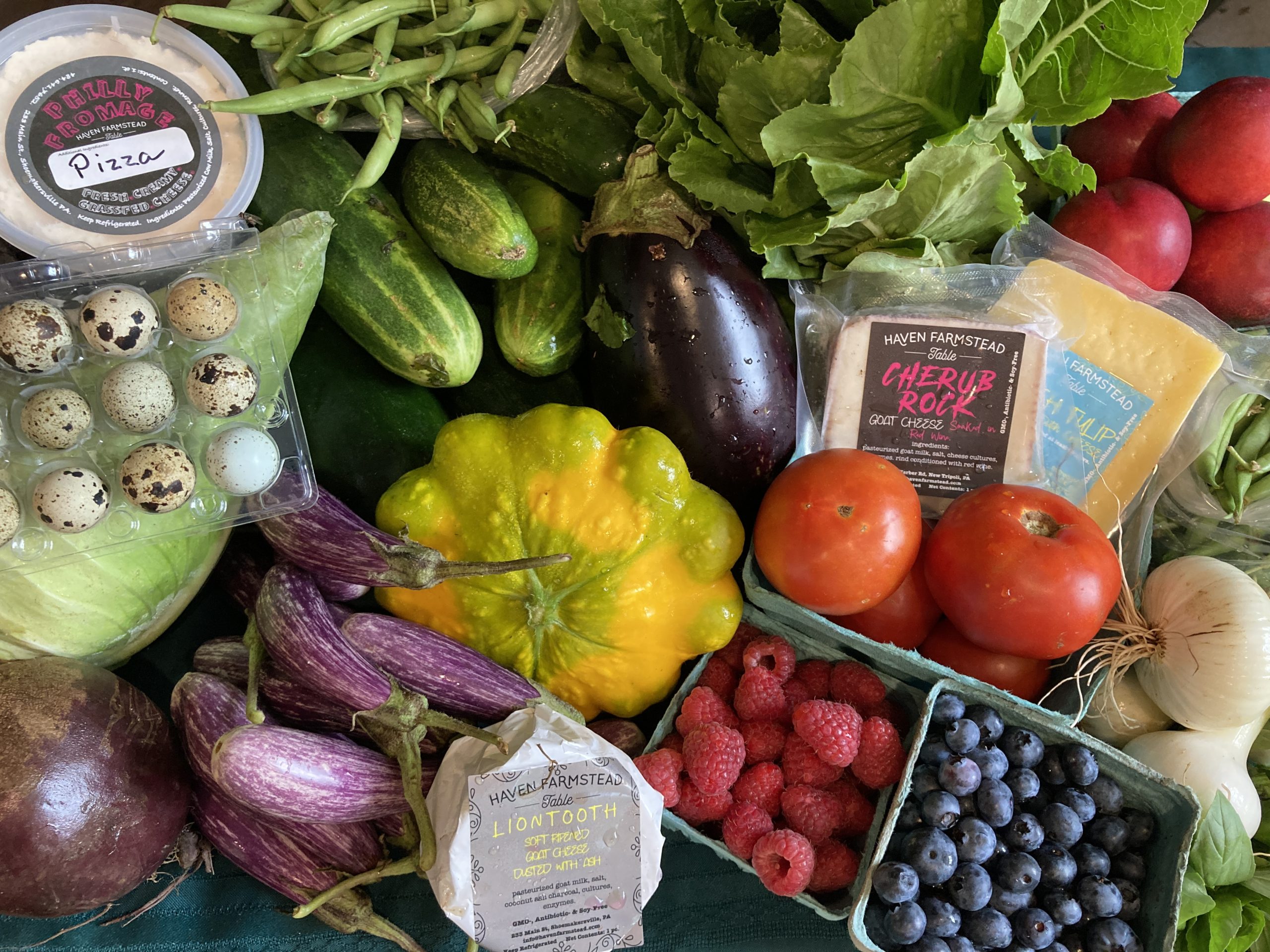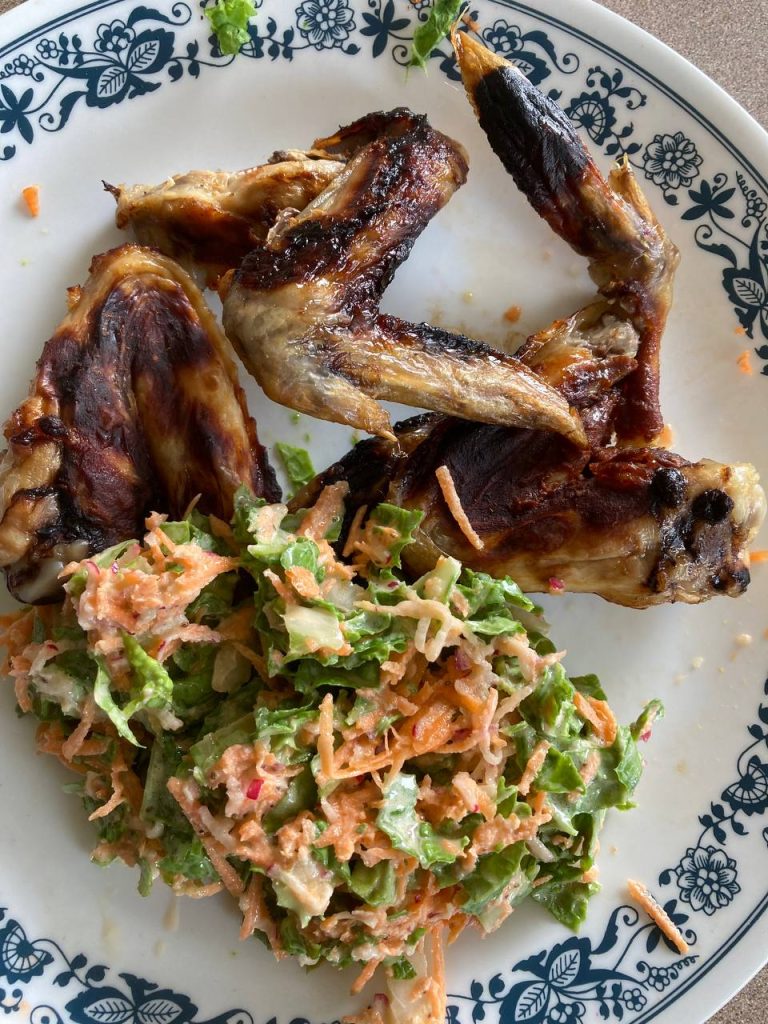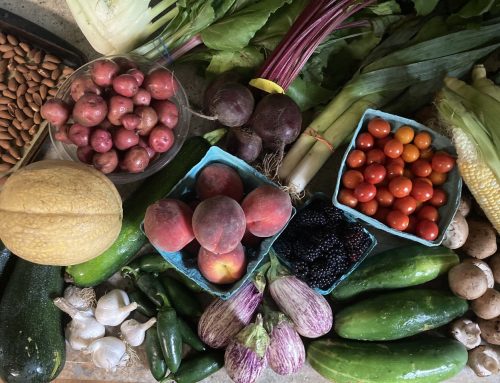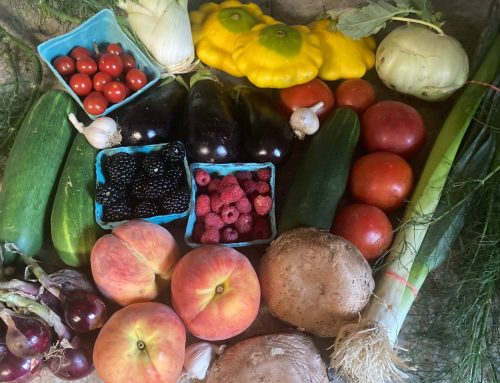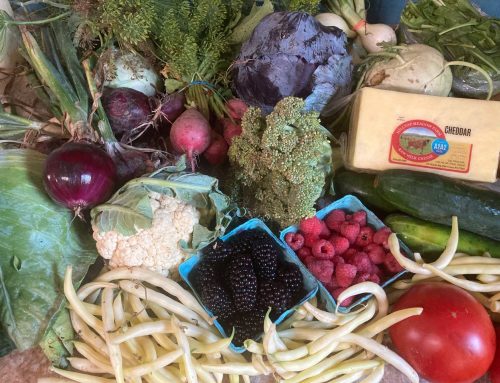Veggies We Harvested This Week: July 18, 2023
Every member’s customized Market Box is unique so we hope you will take advantage more varieties of vegetables as you get comfortable with all the great organic produce we are offering. Use our A to Z Vegetable Guide to help use and store your veggies. Storage tips and recipes below.
Storage & Usage Tips
As I unpack my vegetables from my market box I share extra tips and suggestions that you won’t want to miss.
How I know peppers will be in your box next week?
How much eggplant you’ll get when you select it?
The difference between soft and hard cheese?
All this and more in my unboxing video:
What to use first: basil, beet greens, lettuce, microgreens, red raspberries,
Finished for the season: Asparagus, garlic scapes, snap peas, chamomile,
Done for now but will return: Broccoli, Bok choy, Radish, Napa Cabbage, Collards, Kale
Basil – store as with all herbs. Basil doesn’t like being in a bag in the fridge for very long. A fragrant basil with reminiscent of cinnamon, purple Basil can be used any way Italian basil can – even Pesto. Purple Pesto will be unique in color but finds it’s place in pasta quite easily. Store as with all herbs. Basil doesn’t like being in a bag in the fridge for very long. Green Basil is the classic italian basil for Pesto Recipes. Trim stems and place basil upright in a glass of water in the fridge or on your kitchen counter. Basil pairs well with summer squash, cucumbers, tomatoes and many others. If you cannot use the basil this week, preserve the herb by tying a string around the bunch and hanging it upside down in a well-ventilated and dry area. When it’s dry, crumble and store in an airtight container. One of my favorite salads with Basil, Cucumber and Lettuce
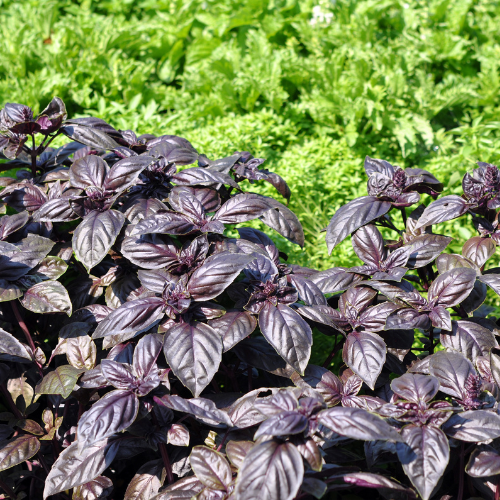
Beets, red – To store: If your beets still have greens attached, cut them off, leaving an inch of stem. Use beet greens first, within one or two days. Store the beet roots, with the rootlets (or “tails”) attached, unwashed, in a plastic bag in the crisper bin of your refrigerator. They will keep for several weeks. To prep: Just before cooking, scrub beets well and remove any scraggly leaves and rootlets. If your recipe calls for raw beets, peel them with a knife or a veggie peeler, then grate or cut them according to the recipe. To remove the skins, you can roast them in foil or boil them, and the peels will slip right off. To freeze: Boil or bake beets until done. Cool them in ice water or let them come to room temperature. Remove peels. Trim the beets into 1/4 inch slices or keep them whole (if they are small). Place in Ziplock freezer bag and remove as much air as possible. Seal and freeze. This Ukrainian Salad uses many of the vegetables in your box this week.
Cabbage – General instructions for all types: To store: Place dry, unwashed cabbage heads in the refrigerator, preferably in the vegetable bin. To prep: Rinse the cabbage under cold water before use. Cut cabbage head in half. Be sure to remove the stem end and triangular core near the base. To use: Eat raw in salads, steamed, braised or fried. Turn raw cabbage into coleslaw or sauerkraut. Roast cabbage steaks/slices at 400 F drizzled with olive oil and salt. Or try stir-frying shredded cabbage in olive oil until wilted with a little bit of minced garlic. To freeze: Choose how to cut your heads based on your end use. Cook in boiling pot of water for 90 seconds. Douse in ice water to stop the cooking process. Drain the cabbage and dry as much as possible. Place in Ziplock freezer bags based on your portions you plan to use, and remove as much air as possible. Put in freezer.
Cabbage, green – this is a green summer cabbage, which means that it is great for any cabbage recipe but it is not meant for long term storage like fall cabbages. It is slaw season so here is another recipe, with a twist: Lime Ginger Slaw.
Cabbage, red – Make a very pretty Red Cabbage Slaw. Braised Red Cabbage or this version with apples and onions for a cooked side dish. Freeze this Amish Freezer Slaw and use your Red Cabbage instead of Green.
Caraflex Cabbage – also known as conehead cabbage or pointy cabbage, is a type of cabbage that has a unique, conical shape with tightly packed leaves. It is a member of the Brassica family and has a mild and slightly sweet flavor. Caraflex cabbage is a nutritious vegetable that is low in calories and high in vitamins A and C, dietary fiber, and antioxidants. It also provides minerals such as potassium and calcium. Storage: To store caraflex cabbage, keep it unwashed and dry. Place it in a perforated plastic bag or wrap it loosely in a plastic wrap to maintain its moisture. Store it in the refrigerator’s crisper drawer, where it can last for up to a week. Avoid storing caraflex cabbage near fruits or vegetables that produce ethylene gas, as this can cause it to spoil faster. Usage: Try raw in salads, slaws, or used as a crunchy addition to sandwiches or tacos. Caraflex cabbage can also be cooked by stir-frying, sautéing, roasting, or steaming. Its tender yet crisp texture makes it suitable for stir-fries, soups, stir-fried noodles, and other cooked dishes.
Special Usage: Due to its cone-like shape, caraflex cabbage is great for stuffing. The individual leaves can be filled with a variety of ingredients, such as grains, proteins, or vegetable mixtures, and then baked or steamed. The leaves can also be used as wraps for healthier and low-carb alternatives to traditional wraps or tortillas.
Cucumber, Pickling – store in a loosely sealed plastic bag in the fridge. This is your opportunity to make a Refrigerator pickle (also called a Quick Pickle) or a Fermented Pickle. Both are easy, though fermented pickles have more probiotic advantages. This blog post will help as well: Ten Strategies For Dealing With An Abundance Of Cucumbers. You may still use pickling cucumbers as snacks or in salads. They just work better for pickling than an english or slicing cucumber.
Cucumber, Slicing – store in a loosely sealed plastic bag in the fridge. Cucumber Salad is a classic!
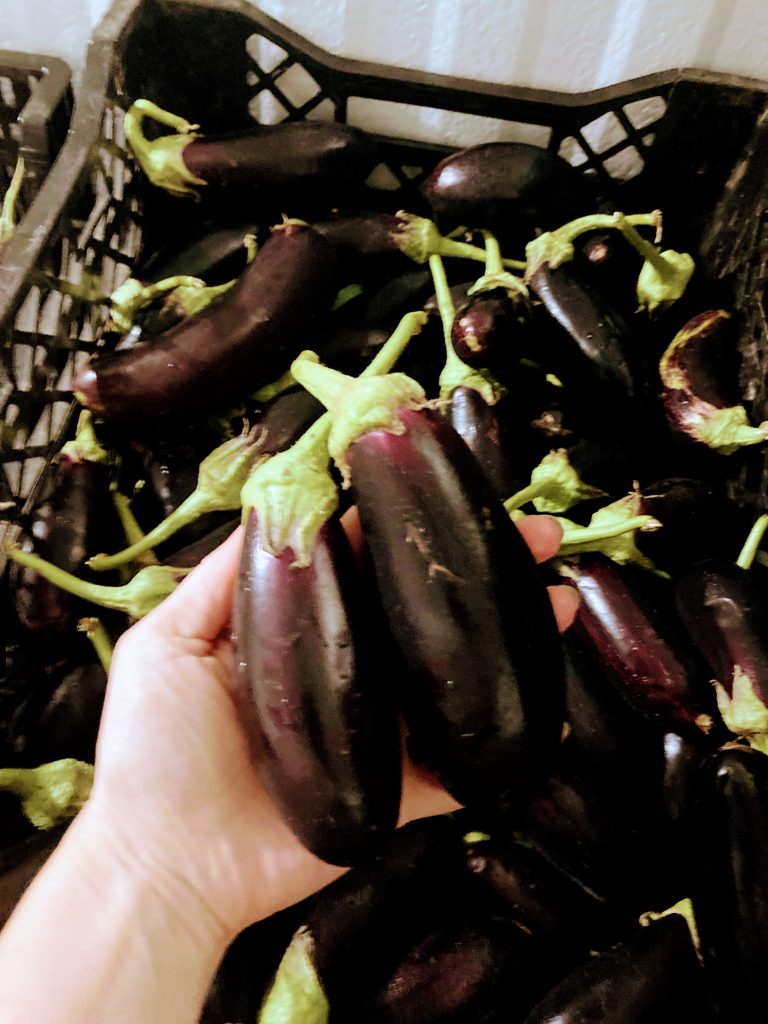
small purple eggplant “diamond”
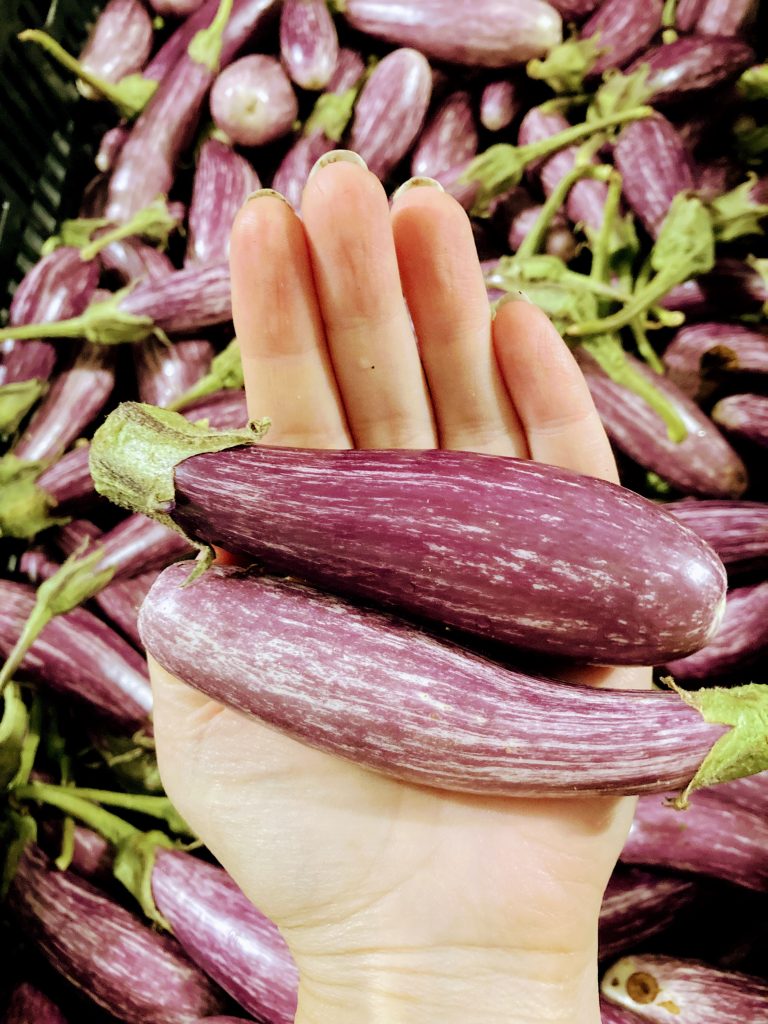
small striped Japanese eggplant
Eggplant can be left unrefrigerated at a cool room temperature for a day or two or in the crisper drawer for one week but it tastes best when used soon after picking. Eggplant can be peeled or unpeeled depending on the type of dish you are preparing.Just like a zucchini doesn’t have much flavor on its own so it’s often paired with other veggies in a dish, so, too, the eggplant is often paired with other stronger flavors. It can be sauteed, baked, fried, grilled, or steamed. You can freeze eggplant when it is cooked in a dish like ratatouille or baba ghanouj, and enjoy the classic eggplant parmesan or pick from these 8 simple ways to cook eggplant.
Salting & Draining Eggplant – It’s a good idea, if time allows, to salt the sliced or chopped eggplant and soak in water for about 15 minutes and then gently drain and squeeze to get rid of acrid flavors according to From Asparagus to Zucchini cookbook.
Eggplant, Japanese – slender varieties of many color variations of purple and white, see pictures above. Lends well to sliced circles.
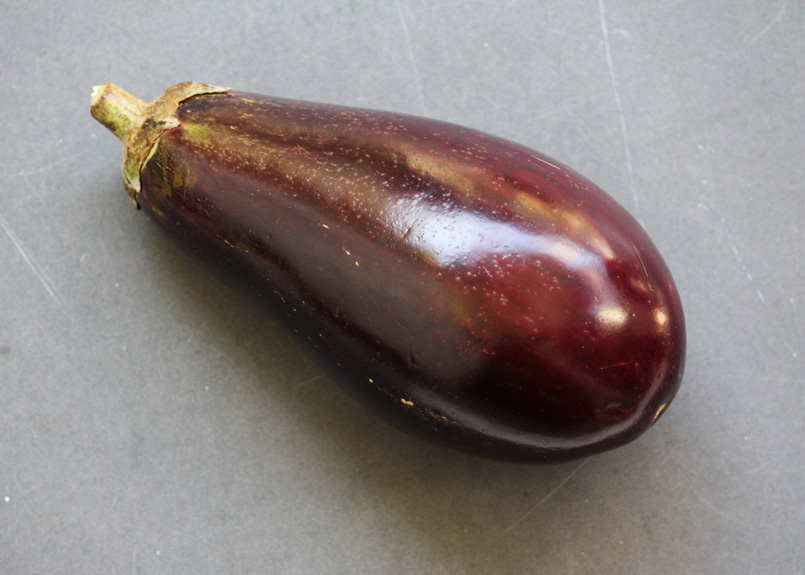
Eggplant, Purple – italian globe variety lends itself to stuffing, slicing, cubing and roasting. You can freeze eggplant when it is cooked in a dish like ratatouille or baba ghanouj, and enjoy the classic eggplant parmesan or pick from these 8 simple ways to cook eggplant.
Green Beans– Beans should be stored in a loosely sealed plastic bag for about a week in the crisper drawer. String beans are great with pesto and I love this recipe for Blistered Green Beans. Country Green Beans uses potatoes too. Roasting them is delicious too! If you made pesto, you may use it in this recipe for Bean and Potato Salad with Basil Oil in place of the “basil oil.” I love the green bean, potato, basil combination. See this post for Freezing Fresh Beans.
Kohlrabi – green or purple variety. Cut off leaves and store separately in a plastic bag – you can use them like kale! Most likely you will receive purple kohlrabi which is more often used as a cooked vegetable. Green varieties are very suitable raw and may be cooked as well. Store bulbs in a bag or wrap in a moist paper towel. Both parts should be stored in the vegetable drawer of the refrigerator. This post has great info and suggestions for Kohlrabi. Other CSA members have enjoyed their kohlrabi grilled, roasted and spiralized into noodles.
Lettuce, Romaine – Store your lettuce properly and enjoy summer salads with sliced vegetables from your box. Lettuce Soup is always an option if you don’t feel like having another salad. This could be frozen as well and substitute a bit of onion for leek.
Microgreens – Refrigerate immediately. Keep bag sealed. Fold down to remove most air. Put in coldest part of refrigerator. Often, a bottom shelf. Can be frozen to add later to soups and other meals. Check out Emanuel Farm Powdered Microgreens for longer term shelf life. They are a tasty, nutrient-rich boost for shakes, smoothies and meals and a great seasoning for adding flavor to dishes and dips. All our micro greens are from Emanuel Farms.
Mushroom, Portobello & Cremini: these will be out of stock for the foreseeable future. The higher ups at the mushroom farm have decided that they don’t want to sell “small orders” of mushrooms to us. If you’ve enjoyed the organic mushrooms, you can let the local Giorgio Farm know by contacting Jenn Emerich, Giorgio Fresh Company Customer Service, Phone Direct Dial: 610-916-8376, Email: jemerich@giorgiofresh.com UPDATE We are working on an arrangement with another supplier.
Rhubarb – To store rhubarb, remove any leaves and trim the ends, then place the stalks in a plastic bag and store them in the refrigerator for up to a week. Although rhubarb is a vegetable, it is often prepared like a fruit or along with fruit since, left on its own, rhubarb is extremely tart. Pie seems to be the go-to for this plant; however, rhubarb makes delicious crumbles, tarts, chutneys, and even can be sauced to add to beverages or chilled soups. Rhubarb Daiquiri , Farmer Sam’s Rhubarb Sauce, Rhubarb Streusel Bread, Oatmeal Rhubarb Pie, Roasted Rhubarb
Scallions – Green onions, or scallions, can be wrapped in damp towel or placed in plastic bag in the crisper drawer of the fridge. Chop and use raw or cooked anyway you would use a bulb onion. The whole of the green onion can be eaten, stalks and all. Try this recipe for Soft Scramble Sandwhich. It’s a perfect time to make Green Onion Pancakes w/ Spicy Soy Dipping Sauce
Summer Squash – green summer squash is often called zucchini but there are many varieties of various green and yellow that are interchangeable in recipes. Try cutting in cubes, wedges, matchsticks, round or long thin slices, spiralized, and shredded for many different preparations. Try using in an herbed frittata. This delicious recipe also uses your onions Grilled Summer Squash with Feta and Onion. Check out my blog post for 10 Exit Strategies for Summer Squash Overload.
Summer Squash, Patty Pan – A special CSA variety of summer squash, that will be familiar to previous members, called “Patty Pan.” This is a great one to stuff: Stuffed Zucchini or 20 more ideas for stuffed options, or Sweet & Spicy Grilled Summer Squash.
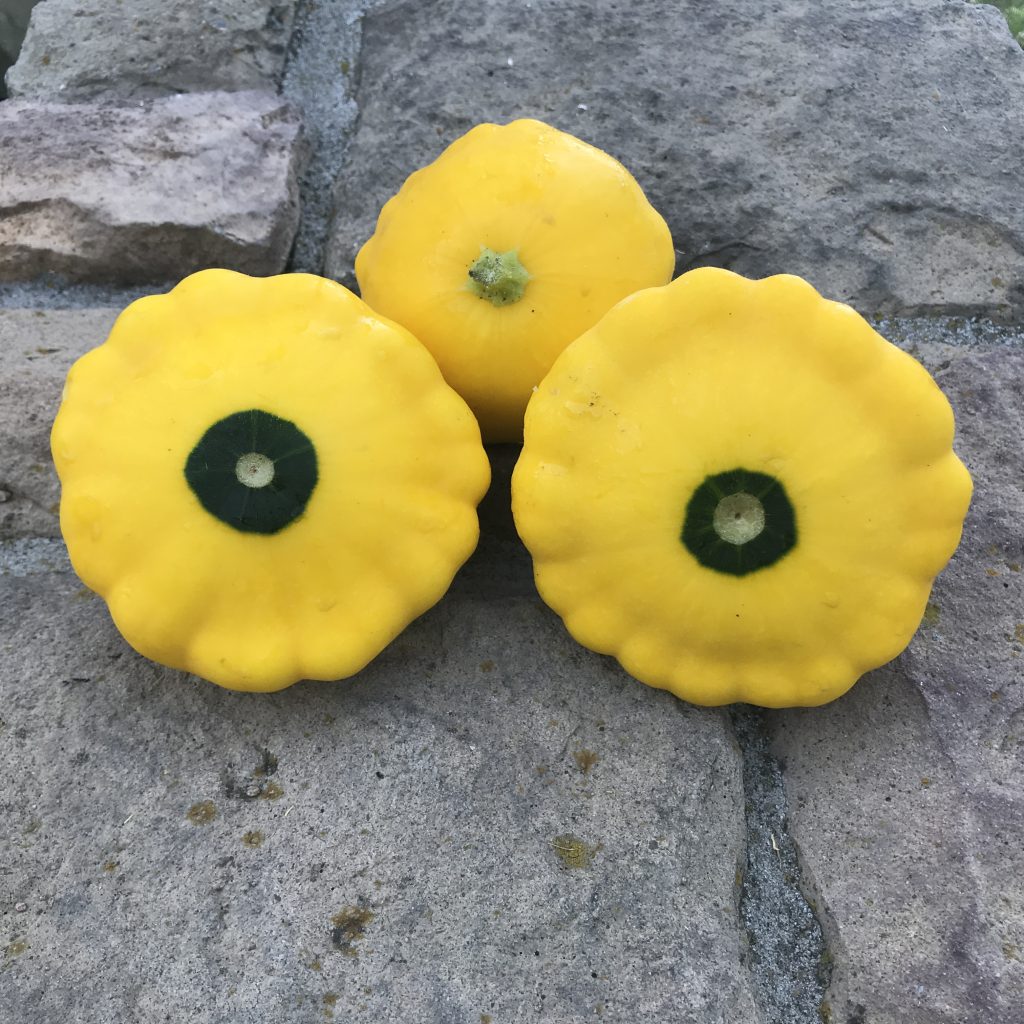
Tomato, Red – Keep tomatoes on the counter at room temperature. Tomatoes should not be refrigerated. Enjoy fresh in salads.
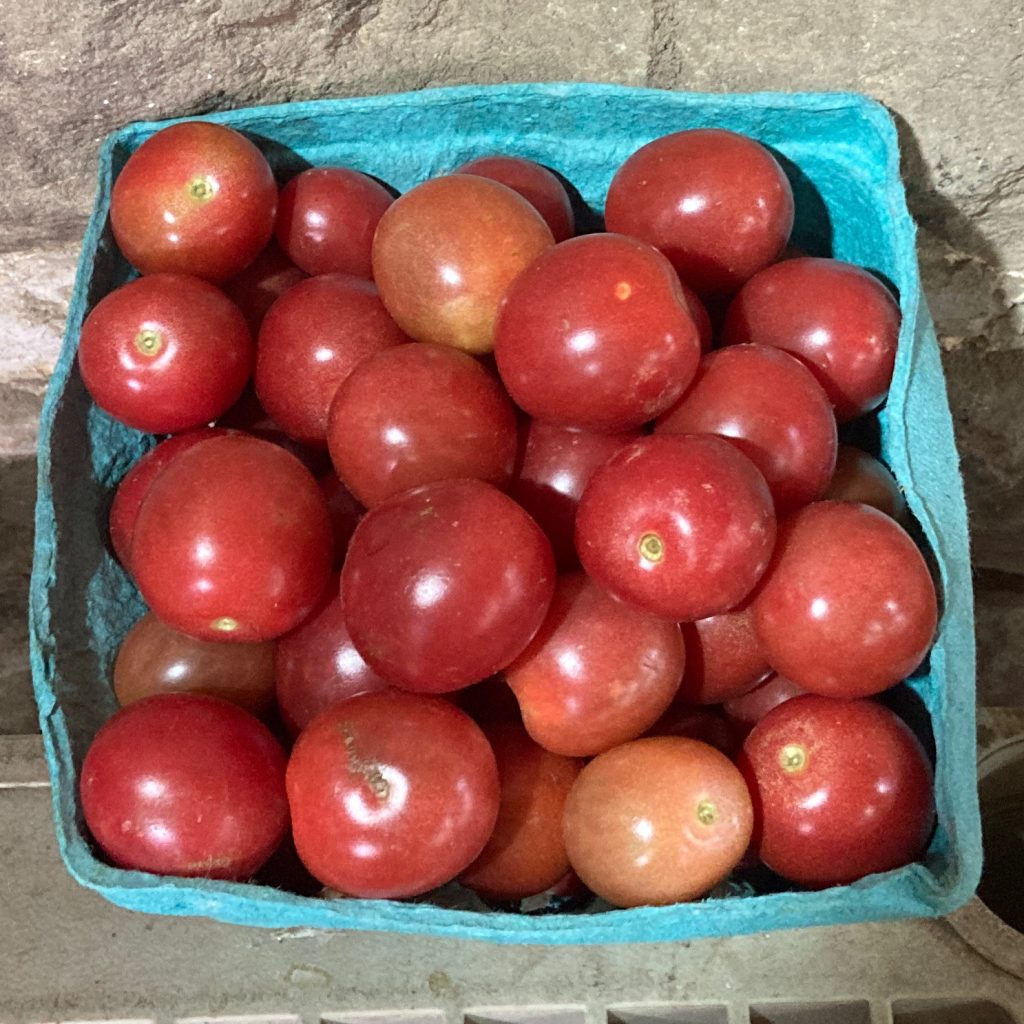
Tomato, Cherry – Store on the counter; do not refrigerate. Snack or use in salad, frittata or pizza.
Farm Food Highlights
FRUIT:
Apricots have a sweet, slightly tart flavor. They are a good source of vitamins A and C, fiber, and potassium, and contain antioxidants like beta-carotene and lutein. Store: Let them ripen at room temperature before placing in a plastic bag or container in the refrigerator’s crisper drawer to prolong freshness. Stored properly, apricots can last up to five days. Usage: Enjoy apricots fresh, as a snack or in salads, or use them in sweet recipes like pies, tarts, cakes, and jams. Grilled or roasted apricots make a tasty side dish or dessert ingredient. They can also be used in savory dishes such as salads, sauces, or glazes. Apricots pair well with honey, cinnamon, ginger, vanilla, almonds, goat cheese, prosciutto, and fresh herbs.
Shiro Plums, also known as Japanese plums or yellow plums, are a variety of plums with a bright yellow skin and sweet, juicy flesh. They have a slightly tart flavor and are known for their firm texture. Shiro plums are a good source of vitamins A and C, dietary fiber, and antioxidants. They also provide minerals like potassium and manganese. Storage: Don’t refrigerate until fully ripe. Stored the same as peaches, shiro plums can last for up to a week. Usage: Enjoy sliced in salads with cheese. Roast or grill for a elegant but simple dessert drizzled with honey and served with brie. This post has other ideas. Shiro plums are excellent for making jams, jellies, and preserves due to their high pectin content. Shiro plums can also be dried or dehydrated for a delicious and nutritious snack.
How long do fresh peaches/plums keep?
Generally, conditioned peaches will last for 3-4 days on the counter, slightly longer in the fridge, and they can be frozen for an extended time.
- Do not place peaches in the refrigerator if they are still firm.
- Leave them on your counter at room temperature until they reach your desired softness.
- For faster ripening you may place peaches in a brown paper bag on your counter.
- Once your peaches have reached your desired softness, you may place them in the refrigerator.
- In the refrigerator, peaches should last an additional week or so.
- For maximum flavor, allow peaches to warm to room temperature before eating (about 30 minutes).
Blueberries – are low-calorie berries packed with vitamins, minerals, and antioxidants, including vitamin C, vitamin K, and anthocyanins. They offer immune support, contribute to bone health, and provide antioxidant protection. Storage: Keep blueberries unwashed in a covered container or loosely closed plastic bag in the refrigerator. Avoid washing them until just before use to prevent moisture. Fresh blueberries can last up to a week when properly stored. Usage: Enjoy blueberries fresh as a snack or add them to cereals, yogurt, smoothies, salads, and desserts. They can be used in baking or incorporated into savory dishes. Frozen blueberries are a convenient option for year-round use.
Red Raspberries – are delicious berries that belong to the rose family. They are low in calories and fat, high in dietary fiber, and rich in vitamins C and K. Raspberries are also a good source of antioxidants, including anthocyanins, which contribute to their vibrant color and may have protective effects against chronic diseases. Storage: To maximize the shelf life, remove any moldy or damaged berries before storing. Place the unwashed raspberries in a shallow container lined with paper towels to absorb excess moisture. Store them in the refrigerator and consume within a few days for optimal freshness. It is best to wash raspberries just before eating to prevent them from becoming mushy. Usage: Delicious when eaten fresh on their own as a healthy snack or added to fruit salads, yogurt, or smoothies. Raspberries can be used in baking, such as in pies, tarts, muffins, or cakes, providing a burst of flavor and a pop of color. They can also be used to make jams, jellies, sauces, or coulis. Raspberries are versatile and pair well with other fruits, dairy products like cream or ice cream, chocolate, and various herbs and spices. Their delicate texture makes them perfect for garnishing desserts or adding a touch of sweetness to savory dishes.
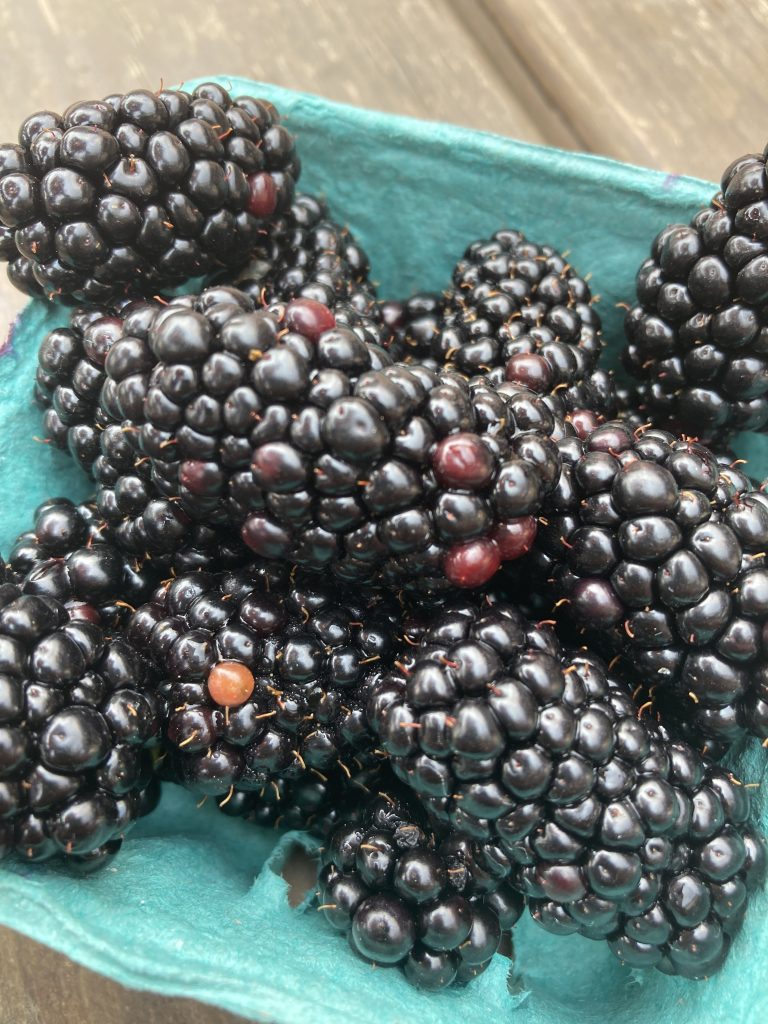
Blackberries – a special treat that you’ll probably want to eat these fresh and natural – they are so good! Also use to top yogurt, frosted cakes, cheesecakes, anything chocolate, etc.
This Vinegar Rinse is highly recommended for Blackberries & Raspberries: mix one part vinegar with three parts water, then gently rinse the berries in the solution. Rinse them again with plain water and pat them dry before consuming or storing.
RECIPES & MEAL SUGGESTIONS:
Beet and Goat Cheese Salad: Immerse yourself in the harmony of earthy roasted beets, tangy goat cheese, and crunchy walnuts, all tossed together in a delightful balsamic vinaigrette!
Salmon and Roasted Vegetables: Savor the succulent salmon fillets, accompanied by a medley of roasted summer squash, crisp cucumbers, and burst-in-your-mouth cherry tomatoes, all cooked to perfection!
Fruit Salad with Yogurt Dressing: Immerse your taste buds in the juicy sweetness of apricots and plums, perfectly complemented by the creamy indulgence of Meadowberry yogurt, for a tantalizing fruit salad experience!
Green Bean Stir-Fry: Enjoy the perfect balance of tender chicken, crisp green beans, and savory soy sauce in this mouthwatering stir-fry!
Summer Squash Salad: Experience the freshness of summer with this vibrant salad featuring crisp summer squash, crunchy cucumbers, and fragrant basil!
Tomato and Mozzarella Caprese Sandwich: Indulge in the classic combination of juicy cherry tomatoes, creamy mozzarella, and aromatic basil, all nestled between slices of perfectly grilled bread!
Nectarine and Blueberry Yogurt Parfait: Indulge in layers of luscious nectarines, succulent blueberries, and velvety yogurt for a refreshing and satisfying treat!
Eggplant and Chicken Curry: Delight in the aromatic flavors of this Eggplant and Chicken Curry, with tender chicken, luscious eggplant, and a perfect blend of spices, served with your choice of rice or naan bread!
Our members are cooking…
Stuffed Patty Pans
Parm Stuffed Zucchini
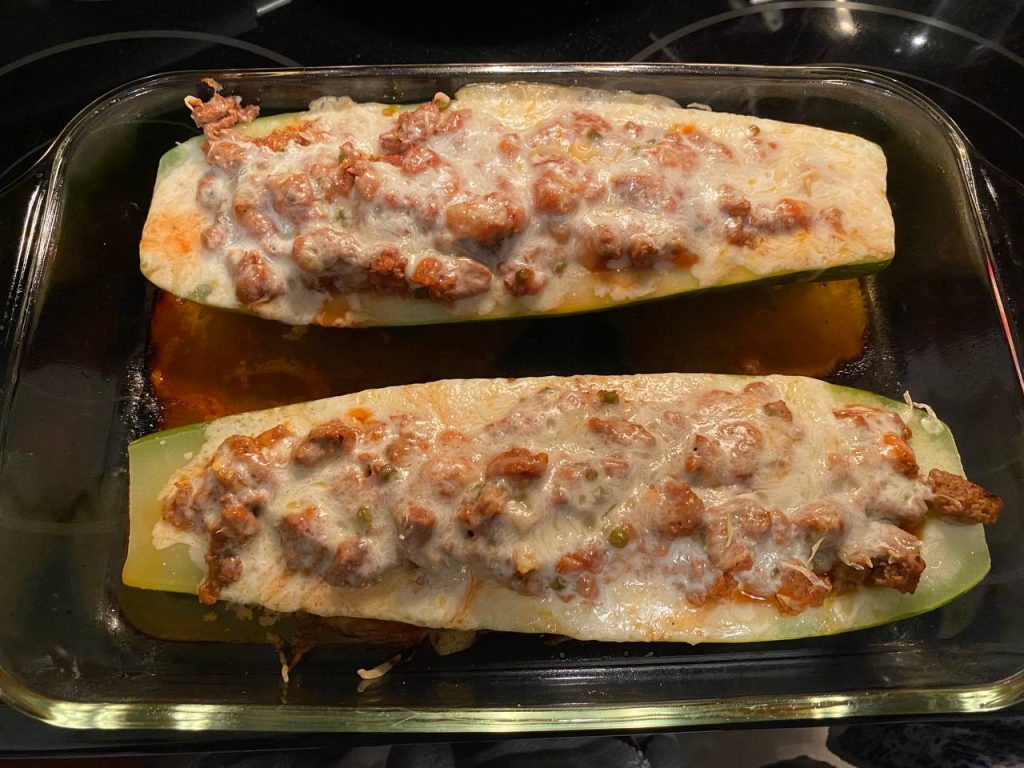
Farm wings and Cabbage Slaw
Breakfast pizza with Pesto, Eggs, Smoked Cheddar and Sausage
Lamb Kofta with feta, cukes, olives, yogurt tahini sauce
Veggie E-Books
Download these collections of tips and recipes for each veggie. You’ll use these as a reference throughout the season.
Tomatoes E -Book
Patty Pan Squash E-book
Eggplant E-Book
Microgreens E-Book with Summer Squash
Don’t Miss Your Farm Events:
NEW! Date Night Flower Tour
Friday, August 18
- Pick and Design your own Flower Bouquet
- Macungie Mountain Farm Lemonade & Food Truck
- herbal infustions and unique farm to table fare
- Personalized Flower Tour with Farmer Annika
- Enjoy the Farm Overlook Deck at Willow Haven Farm
- Wander the Farm and Begin to Relax from your week
Next BRICK OVEN PIZZA NIGHT
Saturday, Aug 5, 2023. 5 pm – 8 pm.
More details and reservations.
Harvest of Wisdom Homesteading Conference at Willow Haven Farm
Saturday, September 2. 8 am – 3 pm.
- morning and afternoon workshops with breakfast and lunch
- hands on workshops
- sourdough bread baking – limit 12 participants
- chicken butchering
- food preservation
- foraging herbs walk with “make and take”
- in depth farm tours with Farmer Reuben
- organic systems for vegetable growing
- organic systems for pastured dairy animals
Limited space. Must register for high demand workshops. Look for Registration information soon.

Market Box Value!
Five of our Top Tips to get the most value out of your Market Box and enjoy the most food you’ll love. Read Here.
Your List of What to Return:
Please return the packaging we sent you for your last delivery. Here’s how and what exactly we’ll take back: Read Here.
We’ll Keep Farming for You!

